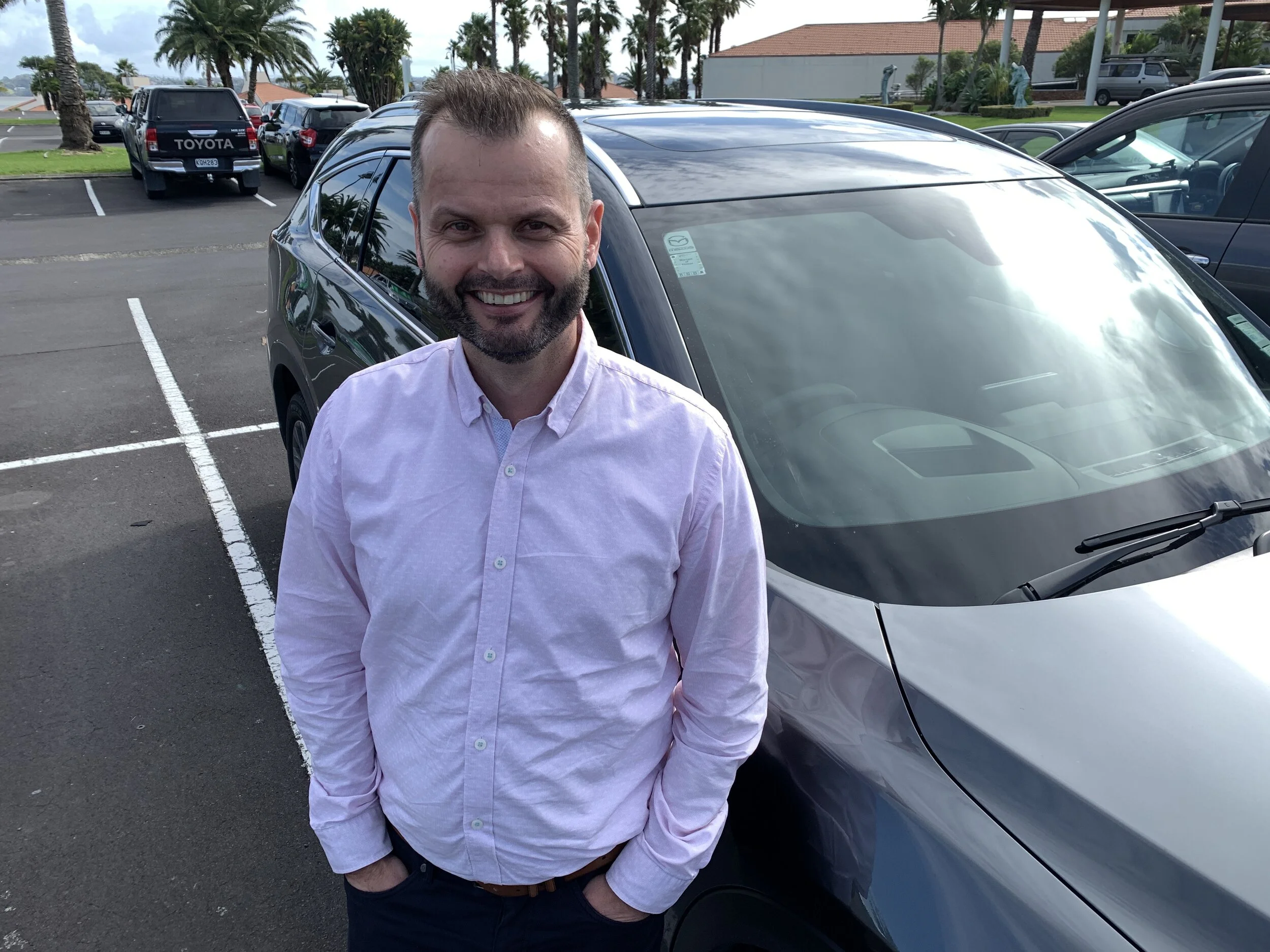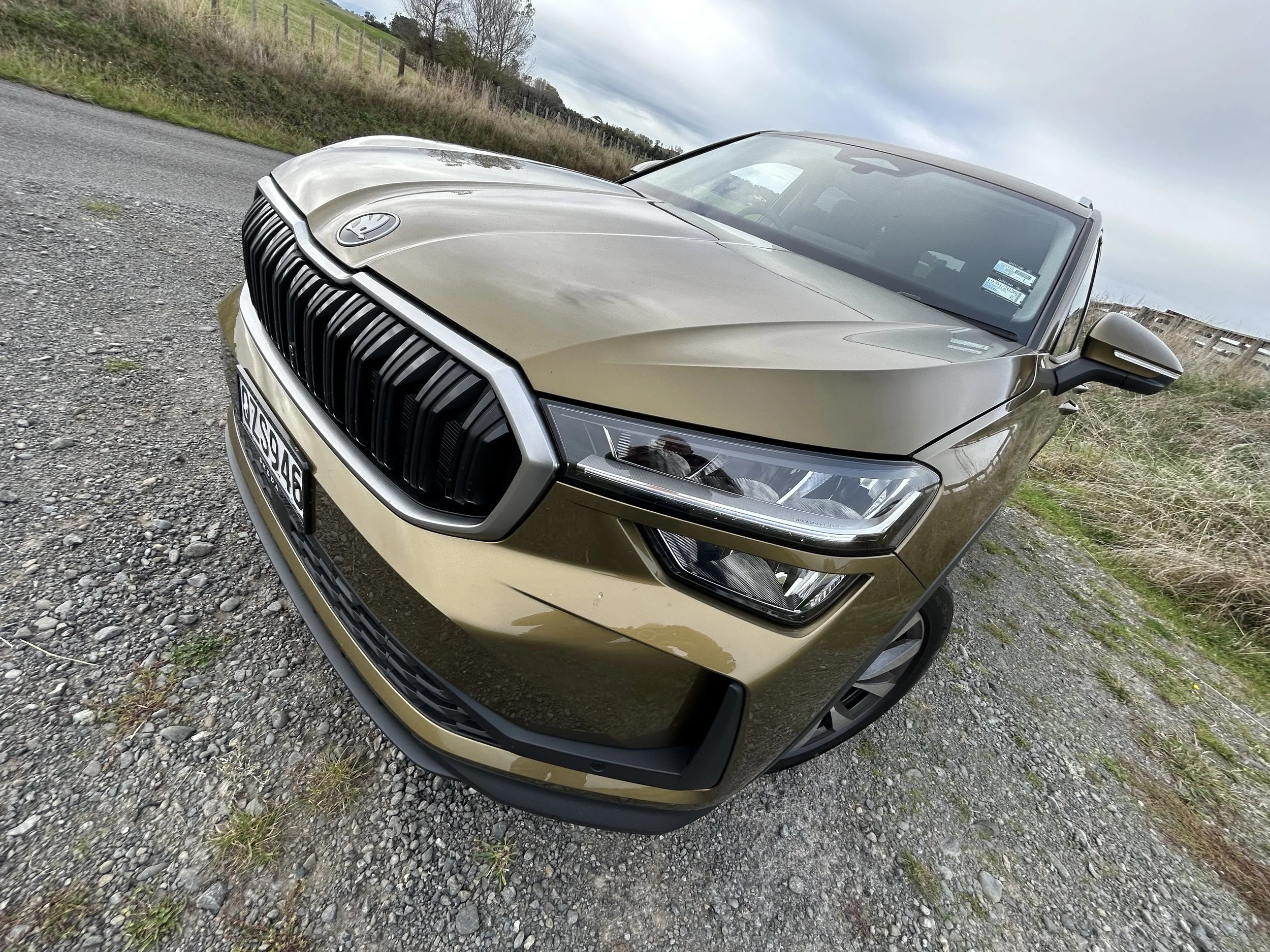Mazda NZ: Electric cars great, e-fuels also worthy
/The brand that’s set to release its first battery-inclusive vehicle in July reckons it’s wrong to think electric is our only future fuel.
Mazda NZ executives Dave Hodge, above, pictured with the brand’s first electric car, the MX-30, and Tim Nalden, below, argue that as good as EVs are, they’re not for everyone. They believe adoption of carbon neutral e-fuels would be highly beneficial for NZ.
THE latest entrant to the electric car sector is also proposing keeping petrol and diesel vehicles in circulation for decades yet.
Mazda New Zealand’s call is tied to adoption of synthetic fuels that could make internal combustion engine (ICE) vehicles just as clean as electrics.
It chose to explain its case at a preview of its first electric car, the MX-30. This compact crossover will introduce from July 1 in a fully battery-compelled format, at a price set to be disclosed at midnight Friday, as well as in a mild hybrid form, for an as yet undisclosed price.
Mazda New Zealand’s boss, Dave Hodge, and his product and sales manager, Tim Nalden, say an e-fuel pitch it has put to Government for consideration is not simply towing an international corporate line nor ignoring the necessity for electric vehicles.
However, they have concern the proposed idea of New Zealand banning combustion engine vehicles by 2035, as has been suggested in a climate change paper currently under consideration for adoption, is unrealistic, won’t best meet sustainability targets and will likely bring massive disruption and cost.
A fleet size of 4.5 million vehicles with an average age of 14.5 years, the lack of electric solutions yet for many vehicle types and also identification that, even in the passenger category where that choice does exist, the take-up rate is modest, suggests NZ cannot cope with that scenario.
As much as Mazda NZ and the parent brand can claim a proud record of commitment to sustainability, including being well on the way to halving by 2030 the average CO2 its products were emitting in 2010, Hodge says it also has the view that the drive forward requires a multi-pronged approach, in which ICE retains importance.
“Our pathway isn’t just EVs … yes, they are absolutely a big part of the future.
Mazda’s belief that that pure electric isn’t the only way is why the MX-30, as well as being released in fully battery form, will also be sold here as a hybrid and, ultimately, in a range extender format in which a small rotary engine acts as a power generator.
“(but) we recognise that EVs do not suit every market, that EVs do not suit every driver. They are certainly part of the solution, without a doubt, and we will be bringing more to the market.
“But more importantly we will be bringing vehicles to market that have a range of different technologies.”
Beyond powertrains, it was looking at fuels. In that light, the local operation believes it would be far more logical for NZ to switch the ICE products it has now, and will continue to get for years yet, to synthetic equivalents of petrol and diesel, which proponents claim will not require mechanical modification, will be CO2 neutral and could be just as clean as electric vehicles.
These thoughts have been put to Government, which has recently asked for submissions to proposed climate change legislation, which will start with a Clean Car Standard that sets a CO2 target of 102g grams of exhaust emissions per kilometre by 2025 – a target no conventionally powered car sold in NZ manages to beat when burning conventional fuels, but would with synthetics.
As much as some makers are signalling intent to depart from ICE making, a considerable count – including Mazda, regardless of a vow to have a totally electrified line-up by 2030 – will keep producing vehicles using fuel consuming powertrains.
In February Mazda Japan became the first automotive manufacturer to join the eFuel Alliance, which proposes these synthetics can reduce the carbon dioxide emissions of existing ICE cars by as much as 85 percent. When the wheel-to-well impact of manufacturing an EV is also accounted, it's a wash.
Such fuels are made by extracting hydrogen via a renewable energy, and capturing it liquid form with carbon dioxide. Compared to pump fuel, e-fuels emit fewer particulates and nitrogen oxide as well.
That's because, proponents explain, they are composed of eight to 10 ingredients while the dead plants we mine contain 30 to 40, many of which are simply burned and emitted as pollution in the process.
development of e-fuels is at the point where Audi in Germany is involved in a pilot plant producing diesel.
Hodge says these fuels have an exciting potential for NZ, given the base formula involves extracting hydrogen from water by electrolysis, then extracting carbon from the atmosphere, making a hydrocarbon, methanol, which is then processed into petrol, diesel or kerosene for aircraft.
“When we are burning the fuel you are only putting back into the atmosphere the CO2 which you have already captured in making that fuel.
“We have a pretty good source of water and we have a pretty good source of renewable energy, and will certainly have even more when Rio Tinto exits the Bluff aluminium smelter in 2024.
“The exciting thing about it is that it is not something that suits new cars – it would suit our existing fleet of four and half million vehicles, plus aircraft, ships, home heating … there are so many different potentials.”
It was a better solution than electric for some applications - “you can’t put batteries in planes and ships, you cannot really put batteries in long-haul trucks” – and, adds Nalden, also gives a NZ potential to develop a lucrative export trade, no least to Australia which is short of the core resources.
There are inhibitors. Cost-wise, an e-fuel works to out to be five times more expensive per litre than a fossil fuel equivalent, and though that would certainly drop to a more acceptable level by the time an industry was established, the timeframe for this occurring is potentially 10 years away.
He says the enthusiasm for electric cars here at political level has tended to ignore some challenges, notably the high cost of buy-in but also that, while NZ looks good for generating most of its electricity by Green means, the hydro, wind, geothermal and solar imprint only came to meet 82 percent of total requirement, with the remainder being met by burning coal.
“With 18 percent of that electricity produced by non-renewable means it means that, when you are driving an EV, you are still, through usage contributing some form of CO2.”
Beyond that, there was the matter of consumer preference. Having EV as a blanket solution, which seems to be the basis of the Climate Commission recommendation, ignored that some vehicle types Kiwis preferred still do not format way and might for some time.
One-tonne utilities were a good example. These account for 25 percent of all new vehicle purchases, yet none are available even as hybrids and no maker has divulged plan to develop full electric versions.
“These vehicles are used for towing and payload capabilities that EVs currently cannot resolve.
“On top of that, there’s price … most EVs are still around $80,000. A lot of people in NZ cannot afford that. On top of that, while EV will continue to flow through, we also need to deal with the current carpark.”





















